On the plateau at an altitude of 3,500 meters, my internal organs were thrown up and down again and again with the acceleration of the winding bus in different directions. Stomach cramps, nausea, dizziness, tinnitus, chest tightness… Intuition tells me that if I don’t go to the hospital, I won’t see the sun tomorrow.
Consciousness drifted away, and in a daze, I seemed to have forgotten why I was in this ghost place.

so good plan
Blame it all on that movie.
During the National Day holiday in 2019, my friends and I decided to challenge our first trip to the plateau. We, who were naive, deliberately chose Daocheng Yading, who became popular because of the movie “Passing Through Your World”. The Internet is also full of praise for this travel route – the last piece of pure land on the blue planet, a scenery that cannot be missed in a lifetime.
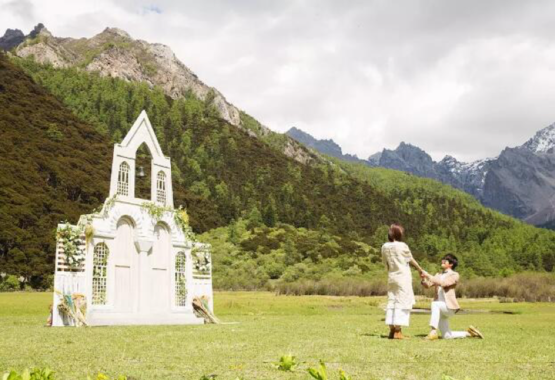
“Passing Through Your World” movie stills
Before leaving, we (thought) did our homework. The altitude of Aden is 3,000 to 6,000 meters. For both of us who were born and raised in Cantonese, this is a big challenge. After all, the altitude of Guangzhou is close to 0. Many online guides say that it is not a big problem to increase the altitude slowly by car; what’s more, we are still two young girls in their twenties, and we don’t usually have the habit of exercising. , my companion is still a licensed practitioner, and he also brought a bunch of spare medicines… Now that he is stable, what are you afraid of?
In order to be safe and see more beautiful scenery, we also specially found a road trip route when we signed up for the group, and planned to have a close contact with the beautiful scenery for four days and three nights. As everyone knows, this is the beginning of my nightmare…

first day:
Terrible winding road and elevation difference
Starting from Chengdu, which is 500 meters above sea level, the bus walked along the Panshan Highway all the way. As the altitude monitored by the APP gradually increased, the mountain scenery outside the window became more and more beautiful, and I was in a good mood. The trip in the morning ended quickly, and we reached an altitude of about 3000 meters for lunch. The tour guide “kindly” reminded us to have a full lunch, because the destination in the afternoon is 4300 meters above sea level, and the journey will be difficult – I don’t think so, Psychologically, “Isn’t it more than 1,000 meters more”.
Not long after driving, I started to feel sleepy. After squinting for a while, I suddenly felt that the car was not right. What’s going on with the steep climbing and diving? I opened the curtains and looked out, and immediately took a breath of cold air—I saw that the winding mountain road was in a “Z” shape, and the body was driving against the edge of the cliff, and I could look down at the smooth stone wall below. The body keeps swaying, rising, and diving, and it is simply a mini version of a roller coaster.
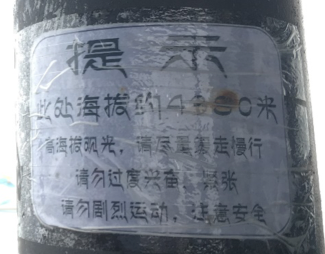
The first scenic spot of the itinerary, the scenic spot at an altitude of 4300 meters | Photo courtesy of the author
There was a sound of vomiting one after another in the carriage. After arriving at the destination, many of the group members began to faint, and their companions also vomited pale. I didn’t feel anything, I was secretly proud of my health. The temperature of the plateau is more than 10 degrees lower than that of the plain. Except for the lack of warmth and a little cold, and a little panting when walking fast, I played pretty well. It seems that I am quite used to the plateau.

Oh my god, am I going to have a fever?
The hotel that night was at Xinduqiao, 3500 meters away. On the plateau after nightfall in October, the air is bitingly cold. Although the tour guide told us not to take a bath, but – as Cantonese! How could it be possible to put up with a dirty face for a day without taking a bath? So, I conspired with my partner, turned on the air conditioner in the room to the maximum, turned on the electric blanket in advance, adjusted the water temperature, and took a quick shower.
At eight o’clock in the evening, I started to feel a little pain in my left temple , a migraine? My companion checked it for me: “Your forehead seems to be a little hot, it’s broken! You won’t have a fever, right?”
Fever may be trivial in the plains, but becomes troublesome in the highlands. There is a shortage of supplies here, and the medical conditions are also poor. There may not be a clinic in a radius of ten miles. The companion asked the front desk and nearby residents, ran the only few stores, but couldn’t find a thermometer. I flipped through the medicine I had with me, took an ibuprofen, and wrapped myself up in bed. I should be fine after a nap, right?
This night, the strange dreams came one after another, and I didn’t sleep well at all.

Spit from your whole world
When I woke up the next day, it got worse and I started to have a severe headache . The tour guide said that after entering the plateau, headache is a normal reaction. The pain was still within the range I could bear, so I decided to endure it for a while. In order to ensure sufficient energy for the next journey, I deliberately ate two more bowls of white porridge for breakfast. I don’t know, for the next 12 hours, this breakfast will be the last time I enjoy…
Today’s drive was bumpier than yesterday’s. After driving for less than half an hour, in addition to the worsening headache, I also began to feel dizzy, chest tightness, nausea, and unstoppable vomiting. The strange thing is that the group members who vomited so much yesterday were all fine. The sound of vomiting today is my solo performance.
Within an hour, the food eaten in the morning had been poured out along with the gastric juices. But the stomach was still rolling along with the wheel, like a grudge. The higher the altitude, the thinner the air becomes. I started to get a little short of breath and worried that I might have altitude sickness, so I intermittently used the oxygen tank provided by the tour guide to inhale oxygen.
I don’t know if it’s a psychological factor or what, the headache seems to get worse after oxygen inhalation. So I was more certain that I was motion sickness and did not continue to inhale oxygen. In order to add energy and water to me, my companions kept making me drink glucose water, vitamin C water, and stuffed various foods. I feel like I’m like a bag, stuff that goes into my stomach and comes out untouched. All morning I was in a constant cycle of eating and vomiting. During the period, we arrived at the second scenic spot with an altitude of more than 4,000 meters. It is said to be beautiful, but I just want to be quiet…
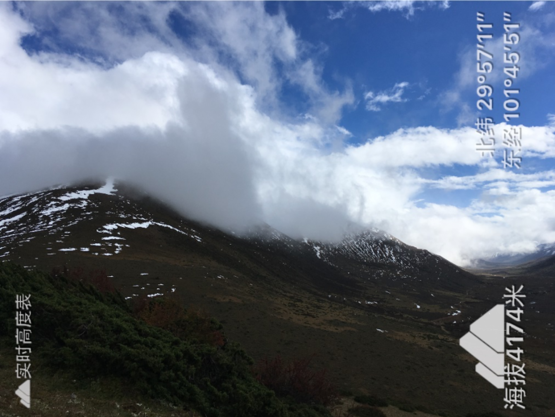
No matter how good the scenery is, I don’t have the spirit to appreciate it (the original image has no filter) | Photo courtesy of the author’s friend
I finally arrived at the final stop for lunch, I thought I had been rescued, and finally I could take a break and eat some light to replenish my strength. Never thought! Today is actually the most abundant alpine cod hot pot, the whole process is self-service, open to eat! Those simply marinated sashimi were put into the same pot with their flesh and blood in the same pot, that pungent fishy smell… I’m sorry, I really didn’t mean to vomit at the pot.
Baby’s heart is bitter, people are “passing through your world”, and I became “vomiting from your whole world”.

I was given a bunch of drugs,
Companions of doctors are helpless…
Among my fellow group members, several enthusiastic aunties persuaded me, “You can’t vomit like this,” and “You’ll be fine by yourself.” I vomited to the point that I didn’t recognize my six relatives. I was so weak that I couldn’t even roll my eyes. Don’t my mother know the importance of eating? But I just can’t eat it!
After finally getting through lunch time, I asked the tour guide for a packet of headache medicine. After taking the medicine, the headache seems to be relieved a little, but the symptoms of chest tightness, shortness of breath, and nausea have not disappeared. After driving, the symptoms came back again.
My companion almost fed me the medicines I brought with me, one omeprazole, a box of aluminum magnesium carbonate chewable tablets, two ibuprofen, and I don’t know how many packs of rehydration salts and glucose… When my companion finally When I announced that I was helpless and anxious, I felt that the revolving light of life had already appeared, and I thought about several versions of my last words .
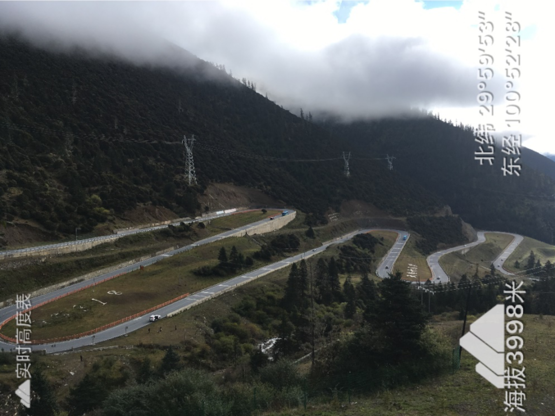
On the scissors mountain, the eighteen bends of Tianlu that made me “nauseous” | Photo courtesy of the author

The road to medical treatment is arduous
The Tibetan area with an altitude of three or four kilometers, driving through a desolate area with few people, and there is no medical institution at all, so it is easier to seek medical treatment.
The tour guide is a straightforward Kangba man. At first, he insisted that I was a spoiled “princess disease”. As long as I eat and drink normally, I disapprove of the severity of my illness described by my companions. My companions made full use of the usual strength of doctor-patient communication, and danced to the tour guide to indicate what is water and electrolyte imbalance. My pale complexion was highly suggestive of hypoxia, and the cold plateau increased the risk of death. In the end, the tour guide was finally forced to agree to help us find a clinic, but there is only a hospital in Aden Town, where we ended up tonight.
When we finally reached our destination, it was past 8pm, exactly 12 hours after my breakfast. Yes, I threw up for 12 hours. After getting off the bus, I collapsed unconsciously on the chair in the hotel lobby, and the remaining consciousness reminded myself repeatedly, go to the hospital, go to the hospital…
When I woke up, I was already in a truck. When I fainted, my partner tried a taxi app, but it didn’t work in this remote town. She talked to the front desk of the hotel and the tour guide repeatedly, and almost got into trouble with the tour guide. Finally, the tour guide agreed to help find the driver. At the price of 200 yuan per trip, she took us to the town clinic, which was about a 10-minute drive away.

Motion sickness? It’s altitude sickness!
We finally arrived at the clinic around 10pm. When I saw the familiar red cross mark, I was in tears…
Oxygen patients sat around the hall of the clinic, and there were many tourists in the emergency room. The doctor saw that my face was pale, and immediately measured my fingertip blood oxygen saturation .
The result is 80%, which is much lower than normal. “It shouldn’t be, such a young girl.” The doctor murmured suspiciously, and gave me another test – 79%!
“This is more serious, immediately arrange a bed and inhale oxygen!” The doctor waved his hand, and I was sent to the emergency observation room. Axillary temperature measurement, 38.3 ° C! Sure enough, altitude sickness! I heard that I vomited for a whole day without eating, and the doctor prescribed me a bunch of infusions. After oxygen inhalation, fluid infusion, stomach protection, and fever reduction, I finally caught my breath.
During this period, the doctor came to visit me on a special occasion. The doctor told us that such obvious altitude sickness is rarely seen in young women, not to mention that I have not yet climbed the mountain. But why the more uncomfortable the portable oxygen tank is? The doctor said that the concentration of the commercial oxygen tank is not good at all, and the medical oxygen pillow can only be used in the event of altitude sickness. Moreover, the occurrence of altitude sickness has nothing to do with physical fitness.
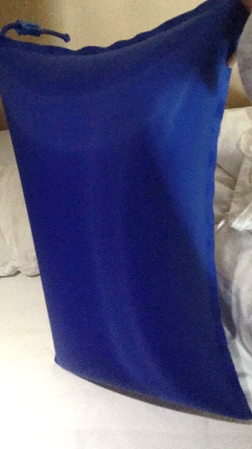
Medical Oxygen Pillow | Photo courtesy of the author
I looked at the patient in the next bed – a sturdy middle-aged man of 1.8 meters, lying on the bed with purple lips, using a mask to inhale oxygen. He said that he was traveling on a motorcycle and was admitted to the hospital only after he found that he had coughed up sputum and blood. Obviously there is no discomfort at all, but as soon as the film was taken, the lungs were edema.
After inhaling oxygen for an hour and a half, my fever subsided, and my spirit was much better. I even got myself to eat something. During the period, the people who took oxygen in the emergency room changed a few times. I calculated the time and I should be able to go. But as soon as the doctor rechecked the blood oxygen at the fingertips – hey, why is it only 83%?
“You can’t go anywhere tonight.” Finally, the companion returned to the hotel to continue the trip up the mountain tomorrow. And I, alone, was kept in the hospital for observation and continued to receive oxygen.
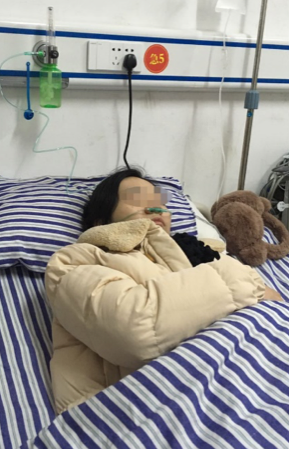
I am taking oxygen and don’t want to reveal my identity | Photo courtesy of the author

After discharge:
With an oxygen pillow tied to my waist, I’m “reborn”
Maybe I was too tired, even in the observation room where people were noisy, I still slept soundly. After inhaling oxygen overnight, the next morning I had no headache, no chest tightness, no shortness of breath, and no vomiting.
Before leaving the hospital, the doctor measured my fingertip blood oxygen for the third time, and it was still 80+% – it seems that I was destined to miss the snow-capped mountain at an altitude of 6,000 meters. However, I am recovering well and can be discharged from the hospital. Before I left, the doctor told me that I must never go to a higher place. I shook my head like a rattle: I won’t go if I don’t go, I won’t go if I die!
Because there are still two days in the trip, I was afraid of altitude sickness and bought two large oxygen pillows at the health center. These two oxygen pillows became the pillars of my final trip with my companions. Relying on them, we finally spent two days and one night without headaches and vomiting.
Later, the group members who completed the trip to Aden asked me if I would feel sorry for not seeing the beautiful scenery with my own eyes. I smiled wryly, I have vomited all over the world you have passed by, and I have no regrets at all.
But there are still some things to regret. I regret that I underestimated the plateau at the beginning, and the investigation before departure was insufficient. I chose a route with such a large altitude change, and I did not take measures to keep warm. If God gives me another chance, I won’t take a bath (no)!
Doctor Reviews
Liu Taotao | Attending Physician of Beijing Hospital Surgical ICU
The mechanism of altitude sickness –
If you are willing to believe in evidence-based medicine, you will think that Rhodiola and Cordyceps are useless, whether for preventing or treating altitude sickness; if you are willing to believe in traditional medicine, I can only say that I do not have the ability and qualifications to evaluate these drug.
I prefer to reason with people using physiology and pathophysiology.
How much oxygen can the heart pump to the body per minute?
The simplified calculation formula is as follows:
DO 2 =1.34×Hb×SaO 2 ×CO
CO refers to the volume of blood output by the heart per minute, CO=HR×SV, HR is the number of heartbeats per minute, and SV refers to the volume of blood that the heart can eject per beat.
1.34×Hb means that each gram of hemoglobin can carry up to 1.34 ml of oxygen, and SaO 2 refers to the proportion of hemoglobin in arterial blood combined with oxygen, which is what we call oxygen saturation.
Suppose a person has a blood hemoglobin of 140g/L, an oxygen saturation of 98%, a heartbeat of 60 beats/min, and 70 ml of blood per heartbeat. Using the above formula, you can know without too complicated calculations:
140g/L×60 times/min×70ml×98%×1.34ml/g
=772ml/min
That is, the person’s heart can provide close to 0.8L of oxygen per minute .
When we run, we need more oxygen. From the above formula, we can know that the faster the heartbeat and the stronger the contraction of the heart, can make the heart output more oxygen. Still the same person, if the heartbeat is increased to 100 beats/min and 90ml of blood is ejected per heartbeat, the oxygen output can reach:
140g/L×100 times/min×90ml×98%×1.34ml/g
=1654ml/min
In this person’s state of exercise, oxygen delivery can be doubled.
It is not difficult to understand that our oxygen consumption must be matched with oxygen delivery.
At high altitudes, the decrease in atmospheric oxygen partial pressure leads to a decrease in oxygen saturation, and even if we lie still, we need more hemoglobin, faster heartbeat, and stronger myocardial contraction to compensate.
Taking a bath and not paying attention to keeping warm can increase oxygen consumption. In addition, many strong men have a larger basal oxygen consumption, so the altitude sickness is more obvious than that of women and the elderly. Altitude sickness in obese patients can be very dangerous.
Symptoms and treatment of altitude sickness –
The brain, lungs, and digestive tract are the parts that are easily damaged by hypoxia, manifested as headache, chest tightness, suffocation, nausea and vomiting.
Slow ascent to high altitudes and allowing your body to adapt is a good way to overcome altitude sickness.
If severe symptoms occur, lowering altitude and oxygen is the key to treatment. Some people say that oxygen inhalation can lead to oxygen inhalation dependence. It’s no surprise that humans are animals, not plants, and of course we are dependent on oxygen, just as we are dependent on clean food and water.
Personal experience sharing does not constitute diagnosis and treatment advice, and cannot replace a doctor’s individual judgment on a specific patient. If you need to seek medical treatment, please go to a regular hospital.
Author: Catherine Catherine
Editor: Mai Mai

Here is the Nutshell patient, focused on telling health stories.
If you have an experience of getting sick or seeing a doctor to share, or want to talk about your own health-related anecdotes, please submit your articles to [email protected]

This article is from the guokr patient (ID: health_guokr), and may not be reproduced without authorization. If necessary, please contact [email protected]
This article is reproduced from: http://www.guokr.com/article/462342/
This site is for inclusion only, and the copyright belongs to the original author.